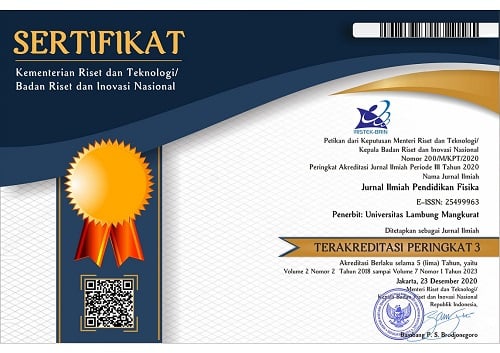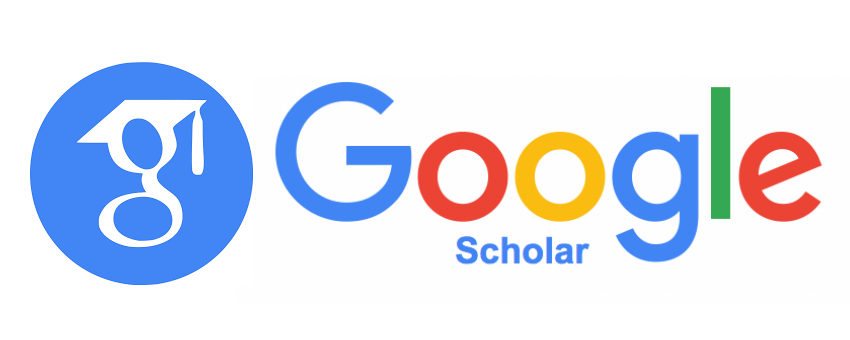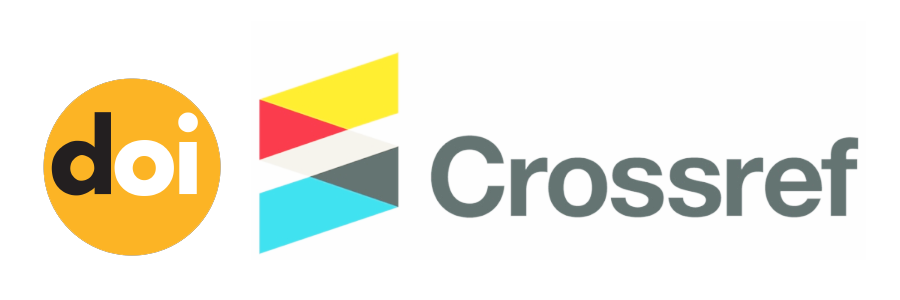Strategic Implementation of Assessment “for” and “as” Learning in Science Education
Abstract
The relatively needed assessments at this time are assessment for learning and assessment as learning. This study discusses the strategy to adopt these assessments in science class. The method used is a literature study by reviewing relevant research results from books and relevant article results. The criteria for the articles discussed are related to assessment of learning, assessment for learning, and assessment as learning. The research findings provide three strategies to conduct an assessment for learning and assessment as learning that are 1) self-assessment, 2) peer-assessment, and 3) feedback. We hope that these results can provide a new perspective for teachers in making assessment schemes.
Keywords
Full Text:
PDFReferences
Arikunto, S. (2008). Dasar-dasar evaluasi pendidikan. Bumi Aksara.
Assessment Reform Group. (2002). Assessment for learning guidance for senior leaders. Deparment for Education and Skills.
Baihaqi, H. K., Jumadi, J., & Zakwandi, R. (2021). Seeing the role of pck and tpack from the perspective of science education researchers in 2018-2020: what’s next? Jurnal Pendidikan Sains (JPS), 9(2), 171–180. https://doi.org/10.26714/jps.9.2.2021.171-180
Basnet, B., Basson, M., Devine, J., Hobohm, C., & Cochrane, S. (2011). Is self-assessment effective in enhancing student learning? In Is self-assessment effective in enhancing student learning? Fremantle: Proceedings of the 2011 AAEE Conference.
Black, P., & Wiliam, D. (1998). Inside the black box: Raising standards through classroom assessment.
Chng, L. S., & Lund, J. (2018). Assessment for learning in physical education: The what, why and how. Journal of Physical Education, Recreation and Dance, 89(8), 29–34. https://doi.org/10.1080/07303084.2018.1503119
Dann, R. (2014). Assessment as learning: Blurring the boundaries of assessment and learning for theory, policy and practice. Assessment in Education: Principles, Policy & Practice, 21(2), 149–166.
Earl, L. (2003). Assessment as learning: Using classroom assessment to maximize student learning. Corwin Press.
Ferris, D. (2002). Treatment of error in second language student writing. University of Michigan Press.
Fletcher, A., K. (2016). Exceeding expectations: scaffolding agentic engagement through assessment as learning. Educational Research, 58(4), 400–419.
Harlen, W. (2007). Assessment of learning. Sage Publications Ltd.
Jaafar, R., & Lin, Y. (2017). Assessment for learning in the calculus classroom : a proactive approach to engage students in active learning. Iejme, 12(3), 503–520.
Karami, A., & Rezaei, A. (2015). An overview of peer-assessment: The benefits and importance. Journal for the Study of English Linguistics, 3(1), 93–100.
Kemendikbud. (2016). Modul pengembangan instrumen penilaian oleh pendidik mata pelajaran matematika sekolah menengah pertama. Kemendikbud.
Kippers, W. B., Wolterinck, C. H. D., Schildkamp, K., Poortman, C. L., & Visscher, A. J. (2018). Teachers’ views on the use of assessment for learning and data-based decision making in classroom practice. Teaching and Teacher Education, 75, 199–213. https://doi.org/10.1016/j.tate.2018.06.015
Lee, I. (2005). Enhancing the effectiveness of teacher feedback in the secondary writing classroom.
Li, X. (2018). Self-assessment as ‘assessment as learning’ in translator and interpreter education: validity and washback. Interpreter and Translator Trainer, 12(1), 48–67. https://doi.org/10.1080/1750399X.2017.1418581
Pang, N. S. K. (2020). Teachers’ reflective practices in implementing assessment for learning skills in classroom teaching. ECNU Review of Education. https://doi.org/10.1177/2096531120936290
Pearson Education. (2006). Literacy objective: Assessment for learning. Pearson.
Reinholz, D. (2015). The assessment cycle: a model for learning through peer assessment. Assessment & Evaluation in Higher Education, 1–15.
Roger, J. (2011). In adults learning. Open University Press.
Shatri, Z. G., & Zabeli, N. (2018). Perceptions of students and teachers about the forms and student self-assessment activities in the classroom during the formative assessment. Journal of Social Studies Education Research, 9(2), 28–46.
Slameto. (2001). Evaluasi Pendidikan. Bumi Aksara.
Stigins, R. J., & Chappuis, J. (2005). Using student-involved classroom assessment to close achievement gaps. Theory Into Practice, 44(1), 11–18.
Suke, S. (1991). Evaluasi Hasil Belajar dan Umpan Balik. Grasindo.
Triwiyono, E. (2017). Pengembangan Assessment for Learning (AfL) melalui lesson study pada praktik pemesinan SMK Sesuai Kurikulum 2013. Jurnal Dinamika Vokasional Teknik Mesin, 2(1), 28–36. http://dx.doi.org/10.21831/dinamika.v2i1.13497
Topping. K., J. (2009). Peer assessment. Journal Theory Into Practice, 48(1), 20–27.
Ur, P. (1996). A course in Language Teaching Practice and Theory. Cambridge University Pres.
Wilson, J., & Wing Jan, L. (1998). Self-Assessment for Students. Eleanor Curtain Publishing.
Wong, B., & Ming, H. (2020). Perceptions of Singaporean primary students: What is self-assessment and feedback to me? (Vol. 12, pp. 6–7). OER Knowledge Bites.
Wong, H. M. (2017). Implementing self-assessment in singapore primary schools: effects on students’ perceptions of self-assessment. Pedagogies: An International Journal, 12(4), 391–409.
Yan, Z., & Brown, G. T. L. (2017). A cyclical self-assessment process: towards a model of how students engage in self-assessment. Assessment and Evaluation in Higher Education, 42(8), 1247–1262. https://doi.org/10.1080/02602938.2016.1260091
DOI: https://doi.org/10.20527/jipf.v6i2.4385
Refbacks
- There are currently no refbacks.
Indexed by: Jurnal Ilmiah Pendidikan Fisika is licensed under a creative commons attribution-share alike 4.0 international license
Statistics Counter |

















